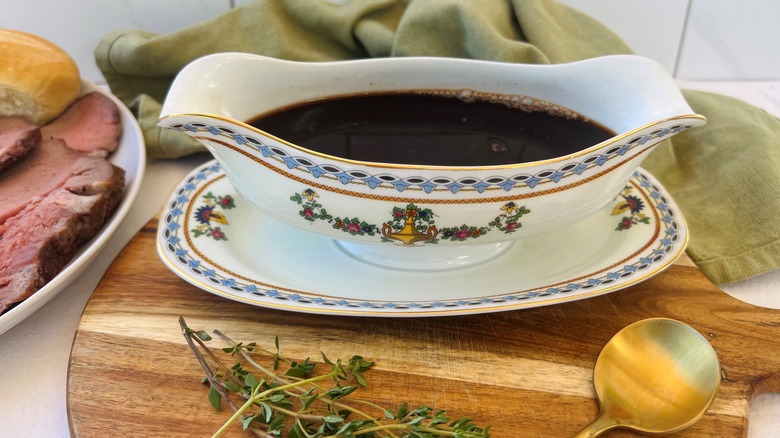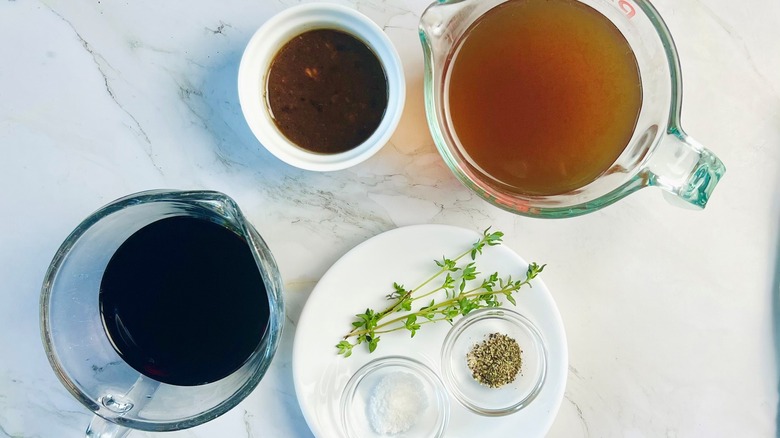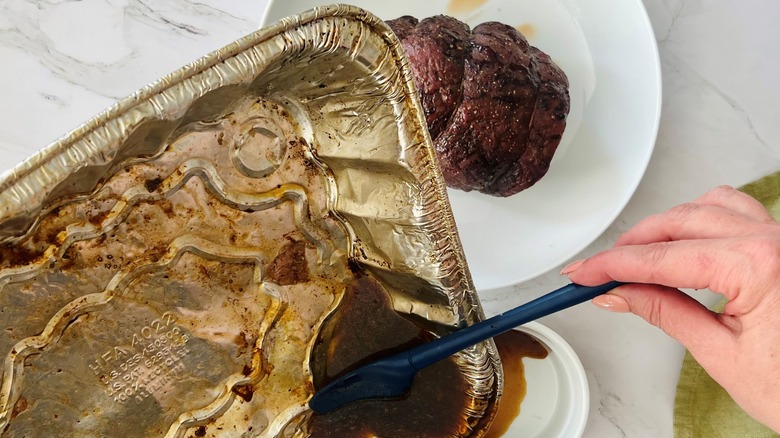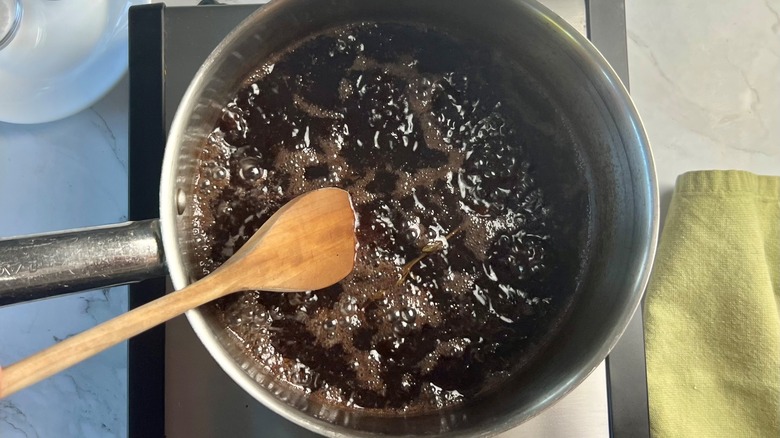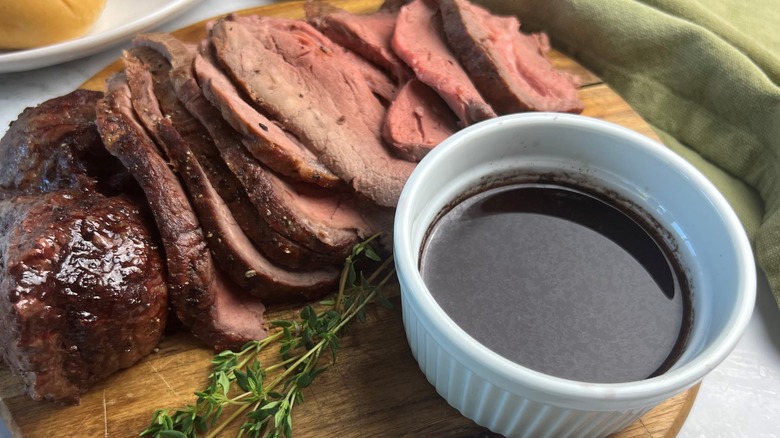Classic Au Jus Recipe
For some people, cooking a beef roast is a sign of a special dinner, when they have plenty of time in advance to prepare the meat and garnishes. Sometimes you might want to keep it simple and serve a roast with store-bought gravy, but there's nothing like preparing a sauce made from the juices — or jus — that collect while the meat cooks.
Considering that French cuisine is the source of many of the terms we regularly use in the kitchen, meat served with its juices is described as au jus in French. Food Republic recipe developer Julianne De Witt brings us this classic au jus recipe that will play an important role in any meat eater's repertoire.
To be clear, the sauce itself is the jus, but as you'll need to cook a beef roast to make this recipe, chances are you'll be serving it alongside, or au jus. "The concentrated flavors that come from the beef drippings create this sauce that will kick your roast beef dinner up a notch," De Witt shares.
Gather the ingredients for this classic au jus recipe
For this recipe, you'll need beef roast drippings (which pretty much means you'll need to cook a beef roast first). "My roast yielded 3 tablespoons of drippings and the roast was quite lean so there wasn't any fat in the drippings. This will vary with the type of roast used," De Witt explains.
Next, get red wine (a wine you enjoy, as you'll be drinking the rest of the bottle) and beef stock. The jus is seasoned with fresh thyme sprigs and salt and pepper to taste. "I used 1 teaspoon salt and ½ teaspoon pepper [...] the amount needed will depend on the type of stock used and how salty the drippings are (i.e. how the roast is seasoned)," De Witt comments.
Collect the beef drippings
Once you've collected your beef roast, remove it from the pan and carefully pour the drippings into a ramekin. Scrape up any browned bits and skim off the fat if need be. De Witt notes, "I cooked the roast on the barbecue in a disposable aluminum sheet pan," which required her to transfer the drippings into a separate vessel.
However, if you are going the traditional route she notes, "You can make the jus directly in the roasting dish by placing it on the stove burner over medium heat, deglazing the pan with the wine, and then adding the rest of the ingredients as indicated in the recipe."
Add all the ingredients to a saucepan and simmer
Pour the drippings into a medium-sized saucepan along with the wine and beef stock. Add the thyme sprigs and bring the contents to a boil before decreasing to a simmer. Let the jus simmer for 15 minutes, occasionally stirring to prevent it from sticking to the bottom of the pan.
Season and serve
Once the jus has sufficiently simmered, turn off the heat and remove the thyme sprigs. Season it with salt and pepper to taste — as De Witt highlights, it's important to taste first since various factors will influence the saltiness. If there are bits floating around, you can strain them using a cheesecloth, though this is not necessary.
De Witt recommends serving this classic au jus with the beef roast you just cooked or along with a French dip sandwich. Pour leftovers into a sealed container and store them in the fridge for 3 to 4 days, or in the freezer for up to six months. One great way to repurpose the jus is to add it to soups or stews, De Witt suggests.
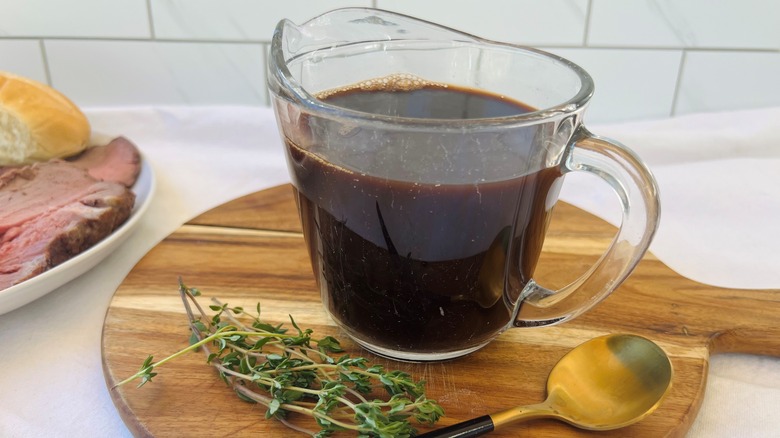
- Beef roast drippings
- 1 cup red wine
- 3 cups beef stock
- 2 sprigs fresh thyme
- Salt and pepper to taste
- Pour the drippings from your roasting pan into a ramekin, making sure to scrape up any brown bits.
- Remove excess fat if necessary.
- Add the drippings, wine, beef stock, and thyme to a medium saucepan.
- Bring the contents to a boil, then simmer for 15 minutes.
- Remove the thyme sprigs and season with salt and pepper to taste.

